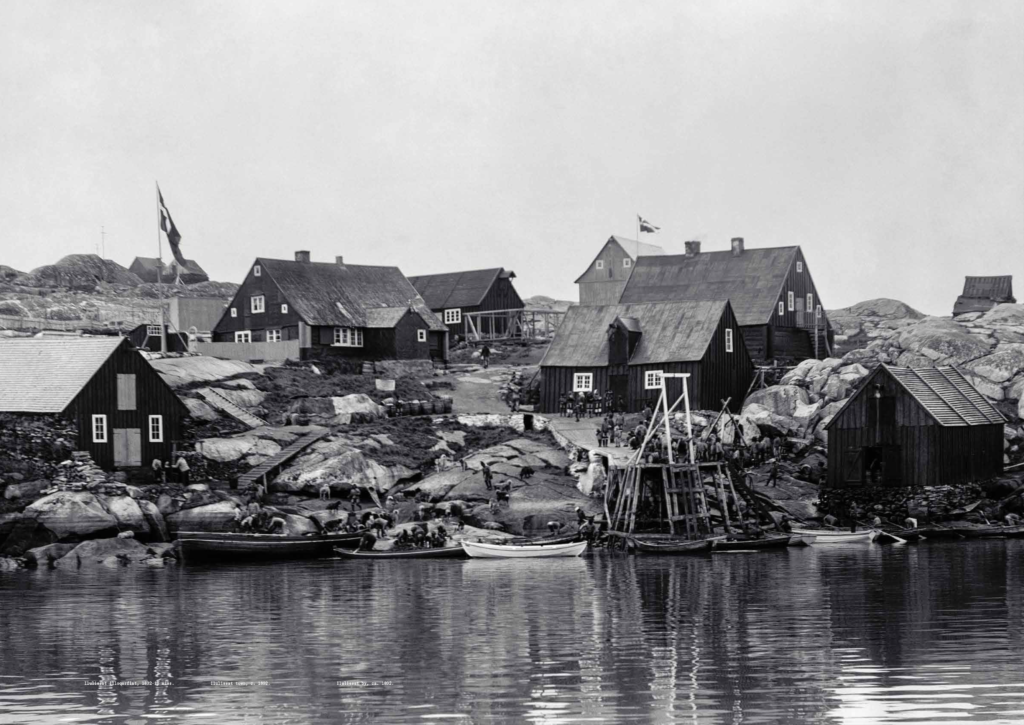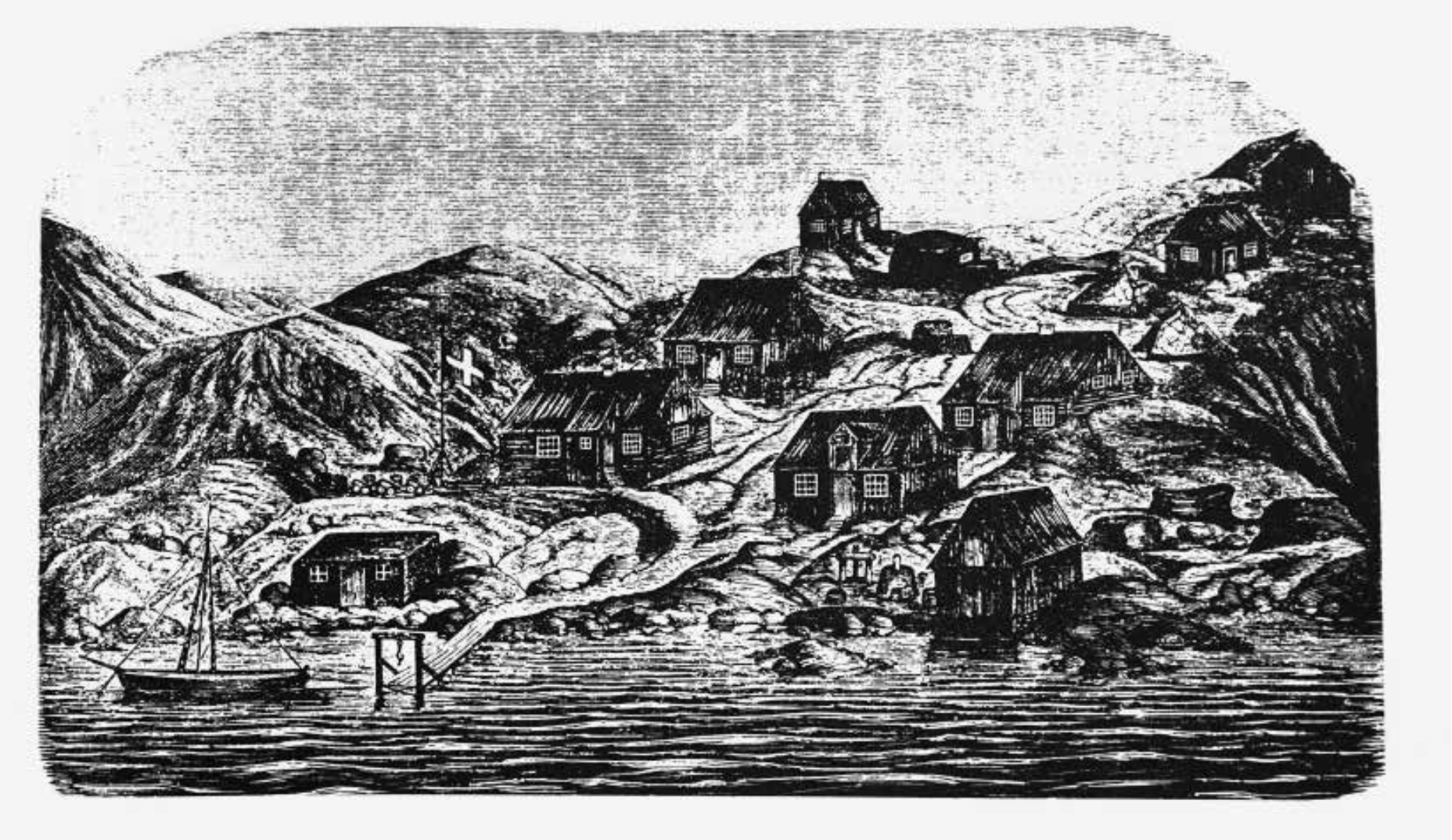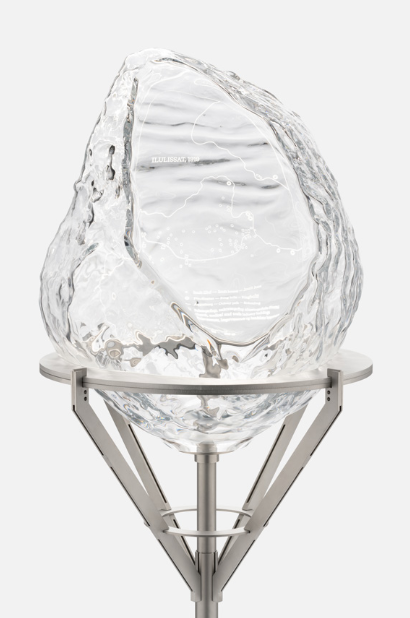
THE DANISH-NORWEGIAN STATE AND FORMALISED TRADE
From 1720 the Danish-Norwergian state founded trading stations in Greenland.
One of those places was Ilulissat. The place was called Jakobshavn after the Danish merchant Jakob Severin. With home rule in 1979 the place got its original Greenlandic name back.

Today 4,700 people live in Ilulissat. A hundred years ago there were just 300.
On page 33 in the book is a map of Ilulissat from 1919.
What does it show?
From 1536 to 1814 Denmark and Norway were a commonwealth.
Which countries are today in a commonwealth with Denmark?
The best and most productive hunters were called great hunters. Apart from providing for their families, they traded their catch for European goods.
In the colonial time economy was bound up with the catch. Therefore the colonial power was highly dependent on the best hunters.
With the shift from hunting to fishing in the 1920s the catch of the hunters was no longer needed and the hunters lost their status.
They became dependent on trading goods in the colonial stores but could no longer cover the needs of their families.

De første bosættere brugte harpun til at fange sælerne med. I dag fanges de med garn.
The picture shows the great hunter Johan Gundel from Illulissat and his family. Imagine that you are one of the children and write a story with the title:
My childhood in the family of a great hunter

With the colonial shops the way of life of the Inuit changed. They moved from the settlements to the trading places. They wanted to live closer to the shop and they no longer needed to trade with other regions in Greenland. So they became sedentary.

How did the way of life change for the Inuit during the 1800s?
Why would people prefer to live near the trading posts? Get help on page 39 in the book.
Describe Sofus’s shop.
From 1720 the Danish-Norwergian state founded trading stations in Greenland.
One of those places was Ilulissat. The place was called Jakobshavn after the Danish merchant Jakob Severin. With home rule in 1979 the place got its original Greenlandic name back.

Today 4,700 people live in Ilulissat. A hundred years ago there were just 300.
On page 33 in the book is a map of Ilulissat from 1919.
What does it show?
From 1536 to 1814 Denmark and Norway were a commonwealth.
Which countries are today in a commonwealth with Denmark?
The best and most productive hunters were called great hunters. Apart from providing for their families, they traded their catch for European goods.
In the colonial time economy was bound up with the catch. Therefore the colonial power was highly dependent on the best hunters.
With the shift from hunting to fishing in the 1920s the catch of the hunters was no longer needed and the hunters lost their status.
They became dependent on trading goods in the colonial stores but could no longer cover the needs of their families.

De første bosættere brugte harpun til at fange sælerne med. I dag fanges de med garn.
The picture shows the great hunter Johan Gundel from Illulissat and his family. Imagine that you are one of the children and write a story with the title:
My childhood in the family of a great hunter

With the colonial shops the way of life of the Inuit changed. They moved from the settlements to the trading places. They wanted to live closer to the shop and they no longer needed to trade with other regions in Greenland. So they became sedentary.

How did the way of life change for the Inuit during the 1800s?
Why would people prefer to live near the trading posts? Get help on page 39 in the book.
Describe Sofus’s shop.




